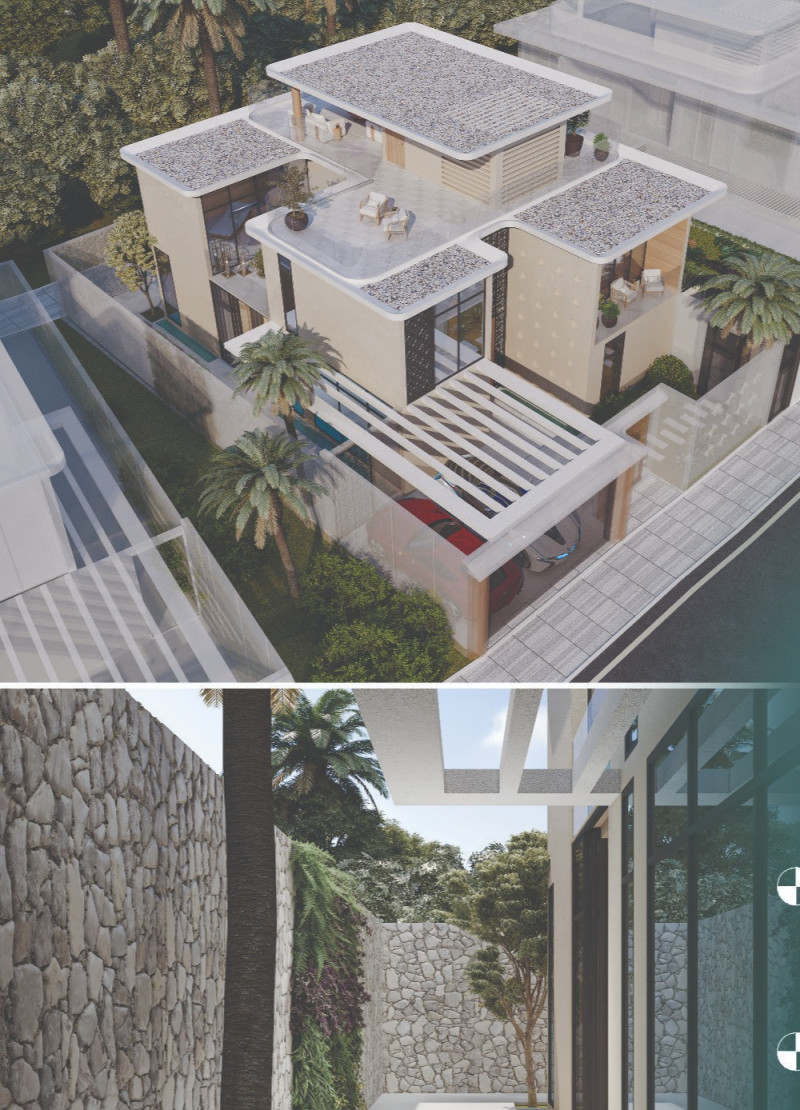5 key facts about this project
At the core of this architectural endeavor is a commitment to creating spaces that cater to diverse needs within the community. The design incorporates various rooms and areas serving distinct functions, including spaces for collaboration, social interaction, and relaxation. This multifunctionality is strategically mapped out to encourage movement and connection among users while providing private nooks for individual reflection. The layout flows intuitively, guiding visitors through the different zones of activity while maintaining an overall sense of cohesion.
Materiality plays a significant role in the project's design approach. The selection of materials is both deliberate and communicative, combining local elements with modern finishes. The facade utilizes a combination of textured concrete and natural wood, striking a balance that reflects the surrounding landscape while introducing a contemporary aesthetic. Expansive glazing invites natural light into the interior spaces, enhancing the overall atmosphere and reducing the reliance on artificial lighting, thus illustrating a commitment to sustainable design practices. The thoughtful incorporation of green roofs and walls not only offers environmental benefits but also contributes to the building's visual narrative, merging architecture with greenery.
Unique design considerations are evident throughout the project, particularly in its response to the local climate and environment. The architectural framework includes passive design strategies that take full advantage of sunlight and prevailing winds, promoting energy efficiency without sacrificing comfort. The building orientation has been meticulously planned to optimize daylight penetration while minimizing heat gain, offering a pleasant ambiance throughout the day. Such features highlight the architect's understanding of environmental psychology and their ability to create spaces that resonate with users on multiple levels.
The interplay between indoor and outdoor spaces is a prominent theme throughout the design. Large terraces and outdoor gathering areas are thoughtfully integrated, inviting users to transition seamlessly between the inside and the outside. This connection nurtures a robust relationship with the natural environment, allowing occupants to experience the tranquility of the landscape while still engaging in community activities. Water features strategically placed throughout the site not only enhance the aesthetic quality but also contribute to cooling the immediate environment, further accentuating the design’s environmental considerations.
In terms of architectural sections, the design showcases a variety of levels that break away from traditional flat planes, offering visual interest and enhancing usability. The interplay of high ceilings in communal spaces contrasts with more intimate, lower ceilings in areas designated for privacy, creating a dynamic experience that caters to different moods and needs. This variation adds depth and character to the overall design, inviting exploration and engagement.
The architectural plans illustrate a comprehensive consideration for accessibility and inclusivity. Thoughtful design elements have been integrated to accommodate individuals with varying abilities, ensuring that the entire space is navigable and welcoming. This attention to detail not only fulfills regulatory requirements but also prioritizes user experience, reinforcing the project’s commitment to creating a community-oriented environment.
Ultimately, the project stands as a testament to innovative architectural thinking, blending form and function in a way that respects its context while pushing forward modern design principles. Professional engagement with architects and builders has brought about this cohesive vision that resonates with a wide range of users. For those interested in exploring the architectural nuances further, including architectural plans, architectural sections, and architectural ideas, a deeper examination of this project presentation will offer invaluable insights into its design and thoughtful execution.


























